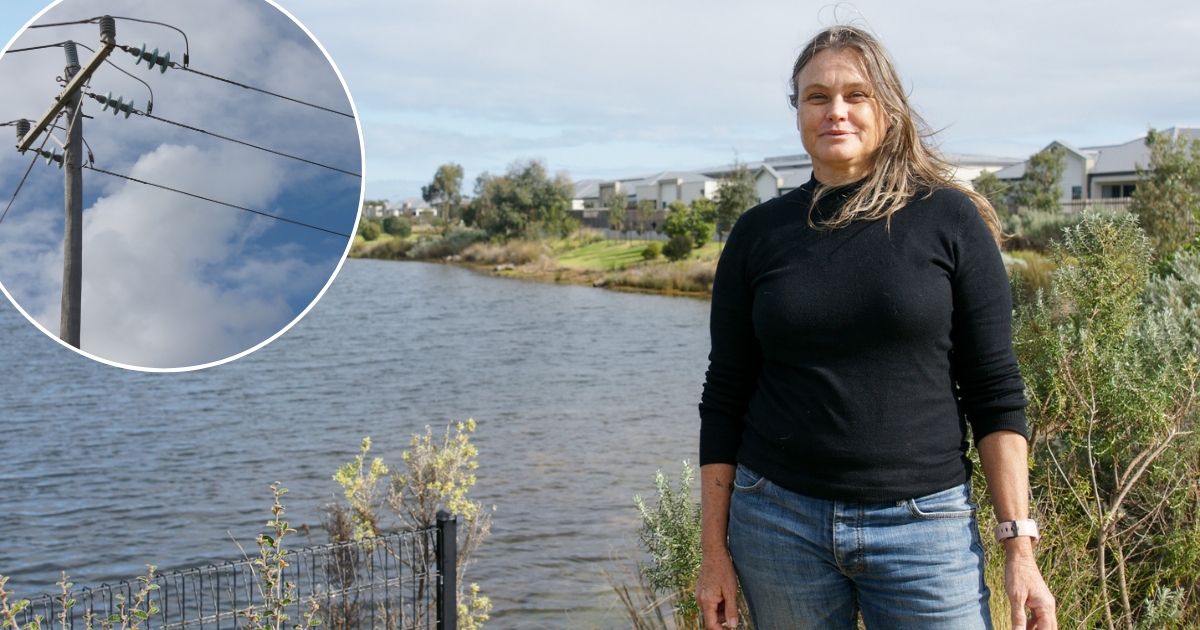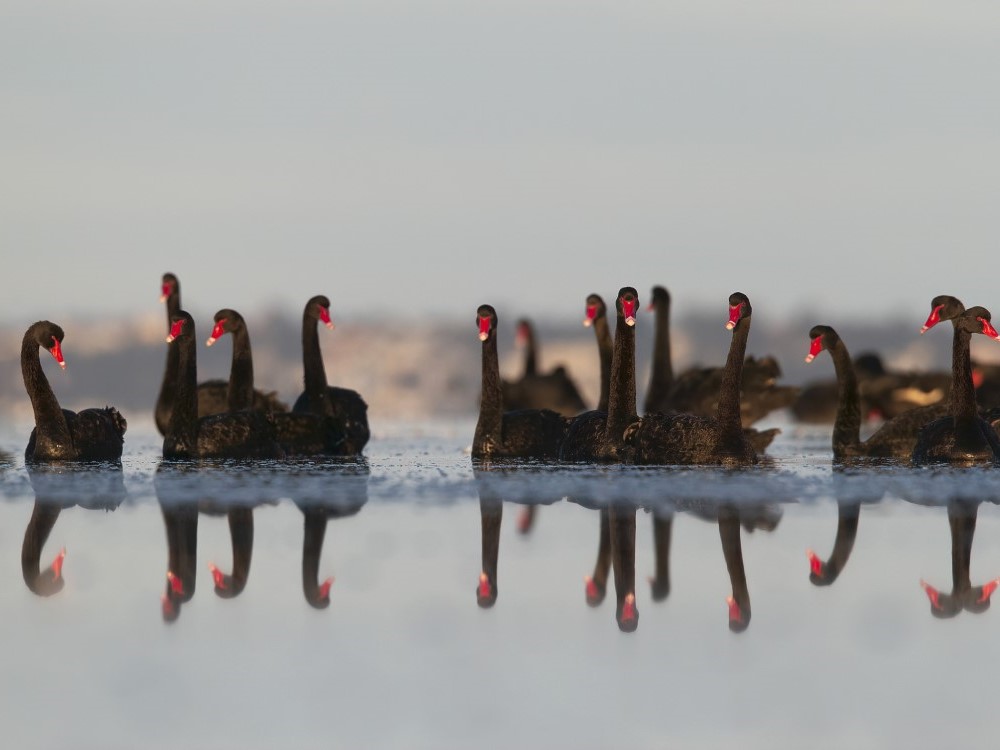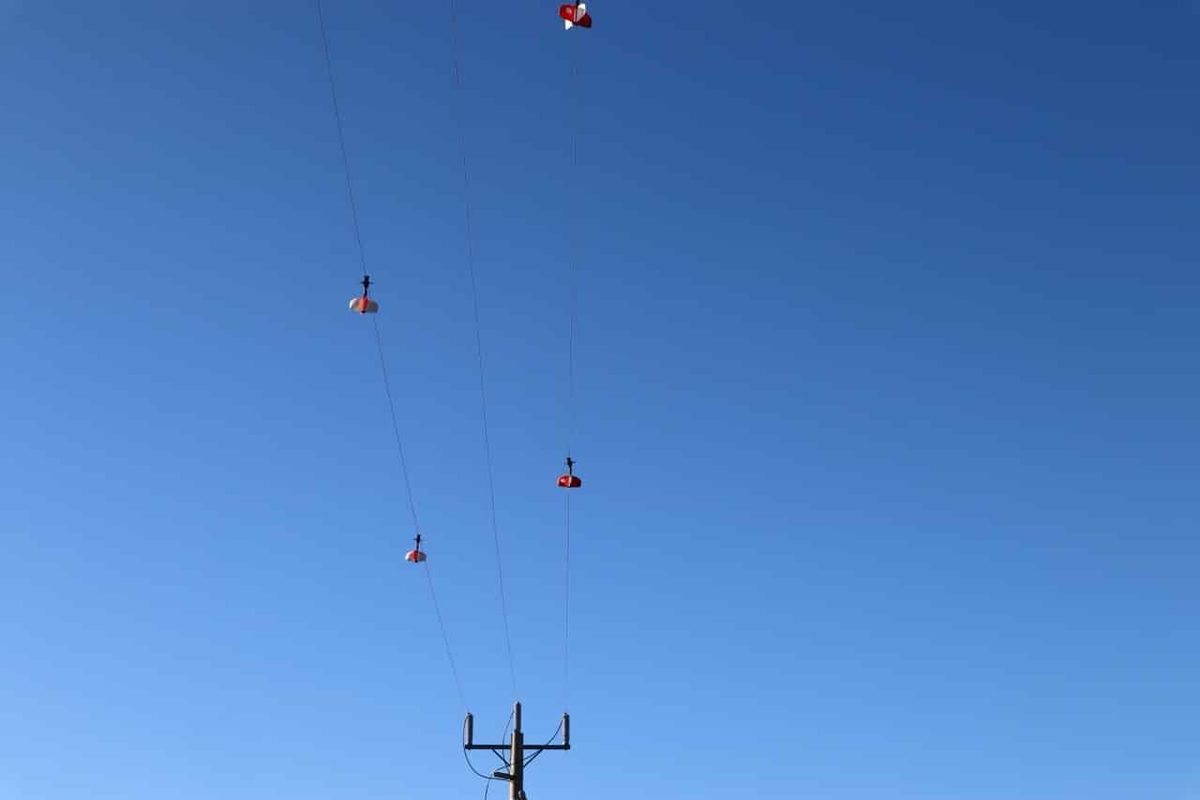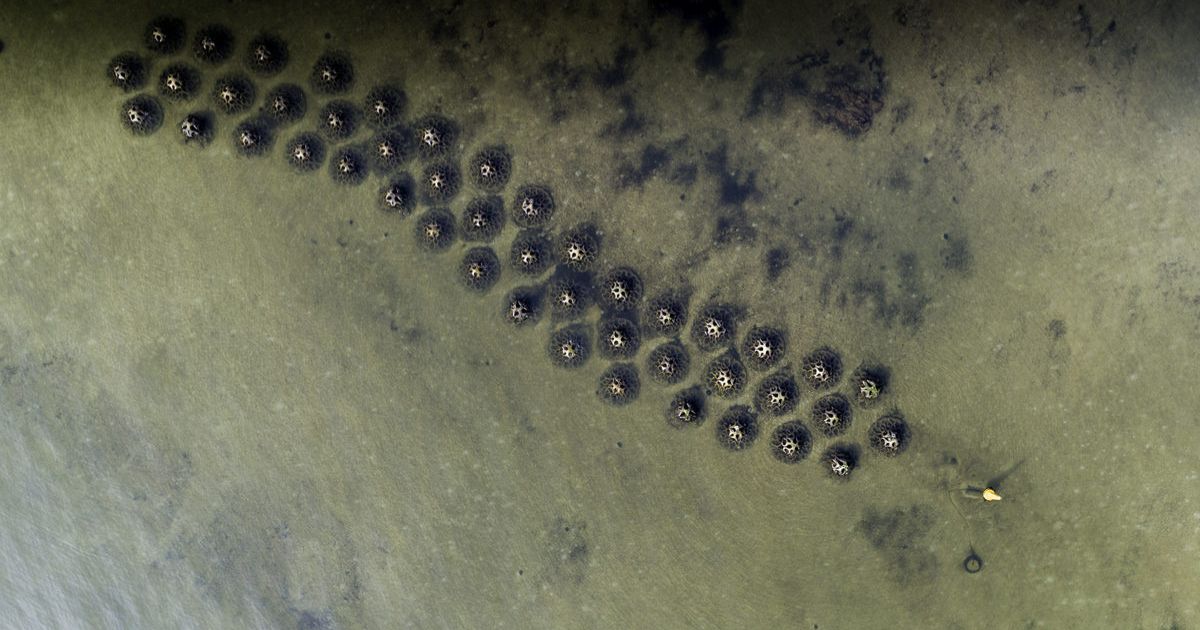Bird collisions prompt Powercor to act on powerlines

Wildlife rescuer Brooke Connor is pictured here at The Point estate in Point Lonsdale where swans and other birds are colliding with powerlines as they travel from waterway to waterway. Photo: ELLIE CLARINGBOLD
POWERCOR will begin installing a series of warning devices on powerlines in Point Lonsdale and Queenscliff in the coming weeks, in an effort to prevent birds and other wildlife colliding with the overhead wires.
These spinning bird deterrents, known as Rotamarkas, wrap around the powerline and are designed to spin and swing in the wind, making the wires more visible to birds flying through the area.
Each year, millions of birds are killed by powerlines, with collisions leading to electrocution or serious injuries.
These collisions can come with other costs too, such as a disrupted electricity service, damage to infrastructure and in some cases, fires.
“We take these concerns seriously and we’re rolling out different measures to better protect wildlife and improve reliability for our customers,” a Powercor spokesperson said.
“We are installing ‘spiral’ warning devices into powerlines near Point Lonsdale to help birds see and avoid them. We expect to install these over the next six weeks.”

Rotamarkas, the spokesperson said, will also be installed across Swan Bay.
“Our team will continue to monitor network activity and keep working closely with customers to improve measures to safeguard our wildlife.”
Local wildlife rescuer Brooke Connor is among those who have been pushing for solutions, particularly for the large swan population that frequents the waterways in and around The Point estate where powerlines sit in their direct flight path.
It’s a concern that will only grow as spring approaches and juvenile swans start fledging. While learning to fly, unfamiliarity with the conditions and the location of powerlines can quickly lead to trouble.
Motivation to decrease risk for the flock has only increased, after a significant decline was recording in the juvenile swan population last season. The cause remains unknown, but some have suggested dredging occurring at the estate at the time may have affected access to the swans’ primary food source.

“Everybody loves the swan and it’s just awful when things are happening to them, because the people really do care for them,” Ms Connor said.
“They’re vulnerable, and we need to be doing everything we can to protect them, to give them as much chance as we can.
“This is a no-brainer. Let’s eliminate that risk.”
Ms Connor is also calling on the City of Greater Geelong, which has recently taken over management of The Point waterway, to assist the native birds by painting contrasting red and grey stripes on the bridge crossing the waterway, where collisions have been similarly recorded. These strips, she said, would help the swans with visibility in periods of low light, such as dusk and dawn.
“We are currently working through the site to understand a range of factors, including how we can best support the swans in the area, and we have committed to investigating what may be possible,” the city’s executive director of city infrastructure James Stirton said.
“Suggestions and feedback from the community are always welcome.”

















